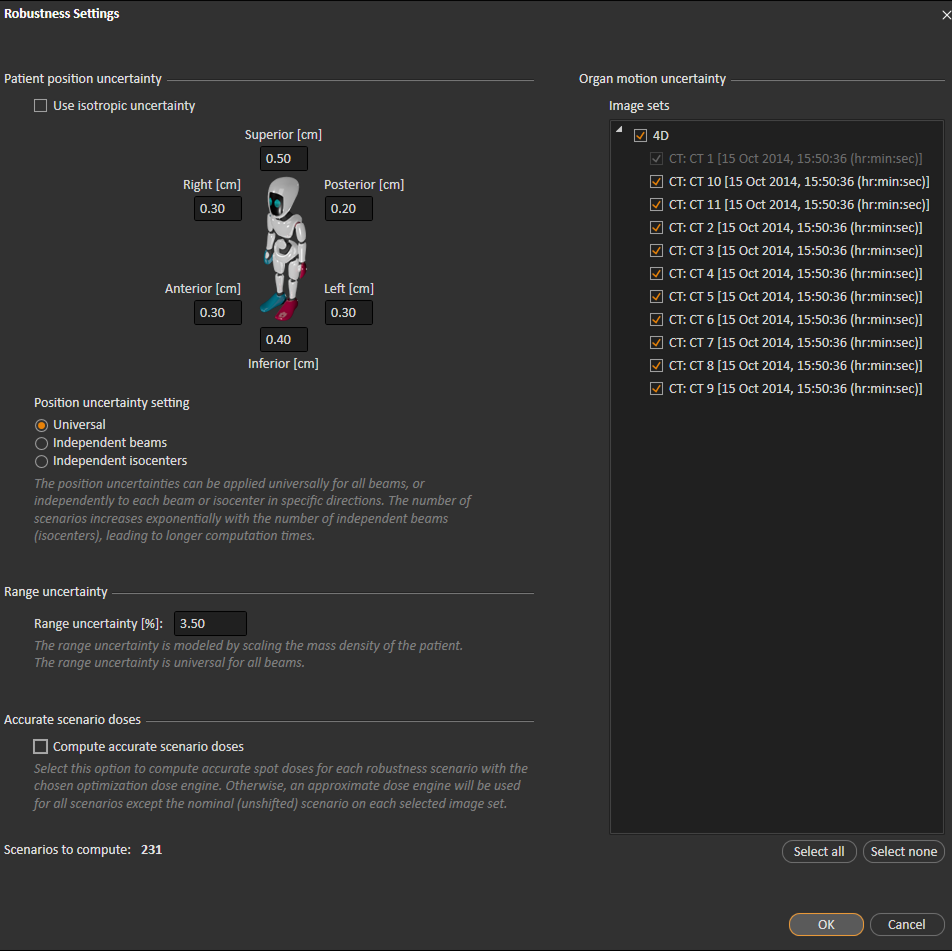Example 1 (Figure 2)
Robust optimization for IMPT applied to a 4D-CT lung case subject to at most 0.5 cm setup errors and 3.0 % density errors was compared to margin-based planning. The ten phases of the 4D-CT were included in the robust optimization. Transversal slices of the planning CT (CT 1) under the nominal scenario and of a non-planning CT (CT 6) under a perturbed scenario are shown in Figure 2. The figure illustrates that robust optimization can lead to improved robustness at the same time as decreased integral dose compared to conventional margins.




